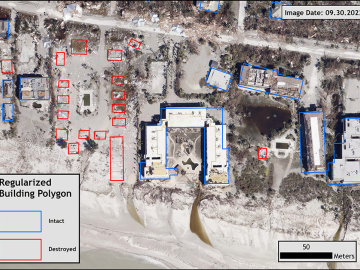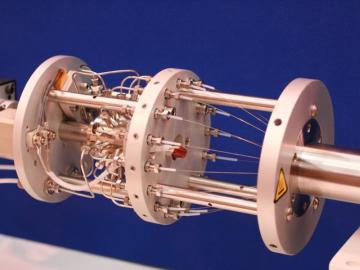
Filter News
Area of Research
- (-) Energy Science (77)
- (-) National Security (19)
- (-) Nuclear Science and Technology (3)
- (-) Supercomputing (112)
- Advanced Manufacturing (2)
- Biology and Environment (37)
- Computational Biology (1)
- Computational Engineering (1)
- Computer Science (4)
- Fusion and Fission (7)
- Isotopes (1)
- Materials (45)
- Materials for Computing (15)
- Neutron Science (21)
- Quantum information Science (5)
News Type
News Topics
- (-) Computer Science (91)
- (-) Frontier (29)
- (-) Polymers (6)
- (-) Quantum Science (23)
- (-) Transportation (39)
- 3-D Printing/Advanced Manufacturing (57)
- Advanced Reactors (11)
- Artificial Intelligence (46)
- Big Data (20)
- Bioenergy (29)
- Biology (19)
- Biomedical (17)
- Biotechnology (6)
- Buildings (20)
- Chemical Sciences (14)
- Clean Water (4)
- Composites (7)
- Coronavirus (21)
- Critical Materials (4)
- Cybersecurity (26)
- Energy Storage (48)
- Environment (48)
- Exascale Computing (24)
- Fossil Energy (2)
- Fusion (9)
- Grid (27)
- High-Performance Computing (39)
- Hydropower (1)
- Isotopes (6)
- Machine Learning (24)
- Materials (31)
- Materials Science (32)
- Mathematics (3)
- Mercury (2)
- Microelectronics (1)
- Microscopy (12)
- Molten Salt (2)
- Nanotechnology (13)
- National Security (37)
- Neutron Science (21)
- Nuclear Energy (32)
- Partnerships (16)
- Physics (11)
- Quantum Computing (16)
- Security (17)
- Simulation (14)
- Software (1)
- Space Exploration (6)
- Summit (37)
Media Contacts

Seven scientists at the Department of Energy’s Oak Ridge National Laboratory have been named Battelle Distinguished Inventors, in recognition of their obtaining 14 or more patents during their careers at the lab.

David McCollum, a senior scientist at the ORNL and lead for the lab’s contributions to the Net Zero World Initiative, was one of more than 35,000 attendees in Egypt at the November 2022 Sharm El-Sheikh United Nations Framework Convention on Climate Change, or UNFCCC, Conference of the Parties, also known as COP27.

ORNL’s next major computing achievement could open a new universe of scientific possibilities accelerated by the primal forces at the heart of matter and energy.

As the United States shifts away from fossil-fuel-burning cars and trucks, scientists at the Department of Energy’s Oak Ridge and Argonne national laboratories are exploring options for another form of transportation: trains. The research focuses on zero-carbon hydrogen and other low-carbon fuels as viable alternatives to diesel for the rail industry.

Laboratory Director Thomas Zacharia presented five Director’s Awards during Saturday night's annual Awards Night event hosted by UT-Battelle, which manages ORNL for the Department of Energy.

Over the past seven years, researchers in ORNL’s Geospatial Science and Human Security Division have mapped and characterized all structures within the United States and its territories to aid FEMA in its response to disasters. This dataset provides a consistent, nationwide accounting of the buildings where people reside and work.

Researchers at ORNL recently demonstrated a new technology to better control how power flows to and from commercial buildings equipped with solar, wind or other renewable energy generation.

ORNL researchers are deploying their broad expertise in climate data and modeling to create science-based mitigation strategies for cities stressed by climate change as part of two U.S. Department of Energy Urban Integrated Field Laboratory projects.

Two years after ORNL provided a model of nearly every building in America, commercial partners are using the tool for tasks ranging from designing energy-efficient buildings and cities to linking energy efficiency to real estate value and risk.

When Bill Partridge started working with industry partner Cummins in 1997, he was a postdoctoral researcher specializing in applied optical diagnostics and new to Oak Ridge National Laboratory.


